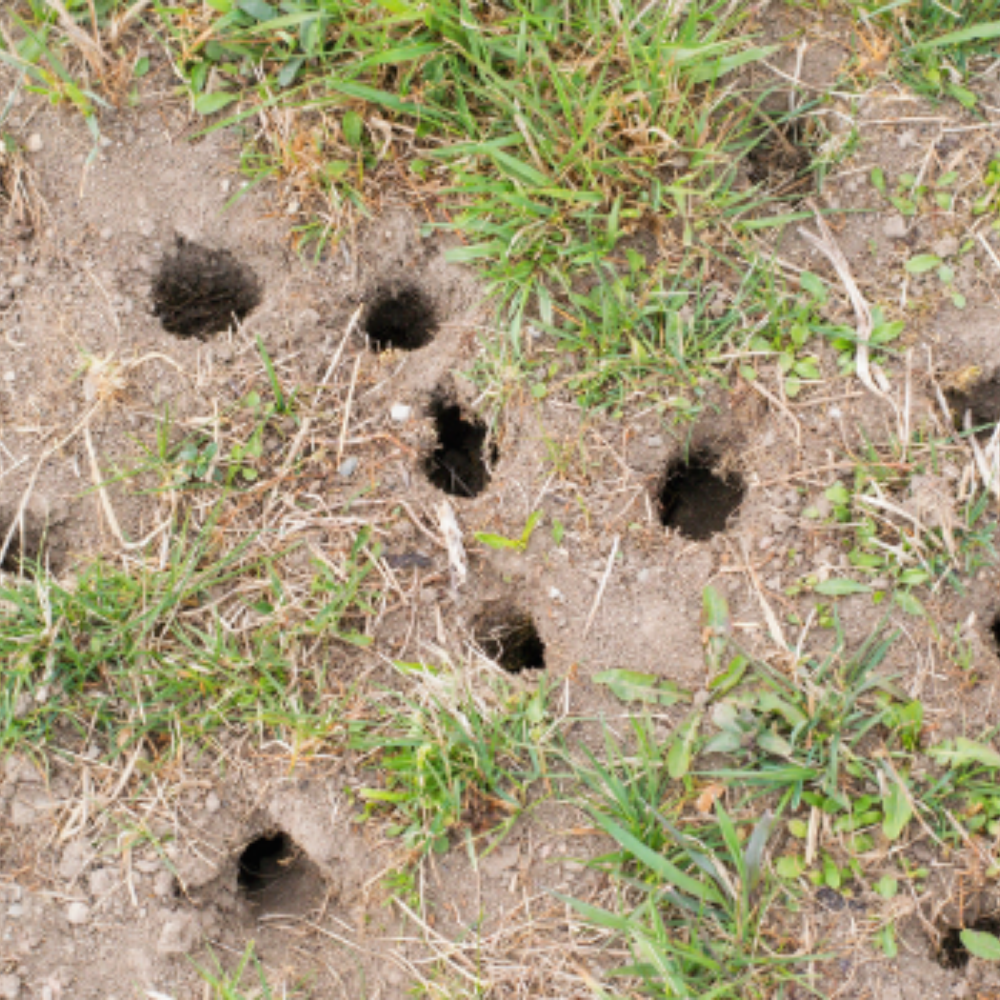
Every year winter weather can cause damage to the lawn but this year with the last summer being very dry in combination with long term snow hiding the grass for a long period, there is more noticeable damage. The common lawn issues revealed once the snow melts are snow mold, vole damage, and road salt damage.
We are all anxious to spend some time outdoors working on the lawn and garden after a long snowy winter spent indoors. Try to hold off a little longer; it is usually best to stay off the lawn until things begin to stabilize. Even though the snow cover may be gone, soils are still cold, possibly still partially frozen, and fully saturated with water. Until these areas drain off naturally, the lawn can be subject to tremendous unintended damage from both maintenance equipment (spreaders, aerators, mowers etc.) and even simple foot traffic. This means that a basic “spring cleanup”, if done prematurely, could result in serious soil compaction issues that might have long term negative effects. Damage to the soil structure inevitably results in poor rooting of the turf plus a loss of vigor. This would be followed by thinning, general weakness, and a heightened potential for disease and the infiltration of weeds.
Snow Mold
There are two types of Snow Mold, Gray Snow Mold or Typhula Blight and Pink Snow Mold or Microdochium Patch. They have similar visual symptoms, but each affects the lawn in a different way. The disease is favored by prolonged periods of deep snow and can grow at temperatures slightly below freezing. Snow mold typically resolves with spring raking and fertilization. Reseed affected areas if regrowth does not occur.

Vole Damage
Voles are plant eaters and so with all the snow covering them, protecting them from predators like hawks, they have had a delectable feast available this winter. When the snow recedes and the turf first becomes visible in the spring, vole damage can appear dramatic, especially when coupled with other issues such as low temperature injury or snow mold. Voles feed only on turfgrass shoots; the vital crown tissue and rootsystem are typically not disturbed. Very often, grass plants will re-grow in the damaged areas as the weather warms. Practices that can encourage rapid recovery include thorough raking (particularly to remove accumulated excrement) and application of organic lawn fertilizer, like Milorganite or Espoma Spring Booster. For extra insurance or repair of areas that do not recover acceptably, overseed with Jonathan Green Black Beauty Blends of grass seed. Apply Bonide MoleMax granules to your lawn now so you can have them move somewhere else. You can also apply in fall to prevent them from staying in your yard.

Road Salt
Turf damage from road salt can be rectified with the application of Jonathan Green Love Your Soil. The salt will be released into the subsoil rather than sticking around and causing the grass to burn up. Jonathan Green Mag-I-Cal Plus will also work to mitigate the effects of road salt as this product is a combination of lime and Love Your Soil.
Conclusion
Once the lawn starts showing a more consistent greening up color and the soil is more alive, you can consider applying your first application of lawn fertilizer with crabgrass preventer. Based on the current weather pattern, that should be anytime mid to late April through the month of May.
Written by Jim Connolly, MCH, MCLP is the Garden Center Manager of Weston Nurseries, Inc., Chelmsford MA.
MCH – Massachusetts Certified Horticulturist
MCLP – Massachusetts Certified Landscape Professional









